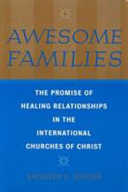Year
2018
Publisher
Punctum Books
Type
BOOK
Category
Architecture
Language
English
Pages
127
ISBN
978-1-95019-215-1
Last Update
05-Nov-2024
Keywords
Architecture & Architectural History
Related
See More
Destino México

Goodwill Impairment

Awesome Families, The Promise of Healing Relationships in the International Churches of Christ

Economic Exchange and Social Interaction in Southeast Asia

Bikol Grammar Notes,

De eerste moslimse vorstendommen op Java